Updated: 24-Jul-2018
(See Elizalde).
After the nationalization of the company Elizalde SA in Barcelona, it was renamed "Empresa Nacional de Motores de Aviación", integrated in the INI.
-Under the acronym ENMASA, it continued to manufacture the Elizalde engines, modernizing them.
-The "Beta", former "Super-Dragon" and with much to do with the BMW 132 (P & W Hornet). Built in several versions: the Beta B-1, B-1A, B-3 and B-4, officially known as 9.E-C29-775 (the one with 775 CV).

"Enmasa B-4"
-The company built 150 B-1 model engines, 350 B-1A's and 300 B-3's, not having concrete data of the total B-4 production.
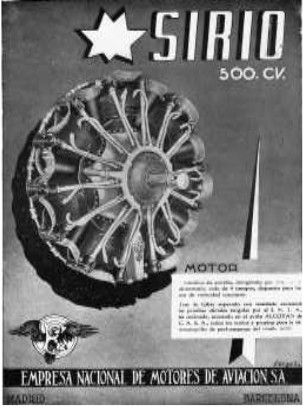
"Sirio advertisement"
-The "Beta" had the "Taca" system with which power was increased slightly, by opening more gas and gasoline, from 750 hp to 775 hp.
-The "Sirio", also radial, known within the factory as S-VII and officially as 7.E-C20-500 with very little production due to the constant arising problems: 20 from the S-VII-1 and 10 from the S -VII-2.

"Sirio S-VII-2"
-From the "Tiger" G-IVA, with official name 4.L-00-125, 275 engines were manufactured and from the G-IVB (4.L-00-150) they built 475 engines.

"Tigre G-IVA-5"
-The acrobatic version of the Tigre was the G-IVA-5 with inverted oil collection.
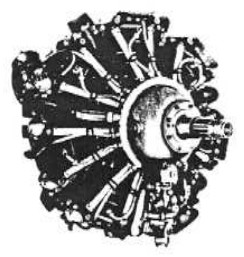
"ENMASA Alción"
-The "Alción" A-1, officially called 7.E-CR15-275 and in 1956 it was in a prototype stage, like the "Flecha".
-Both the "Alción" and the "Sirio" did not reach normal production because the aircraft to which they were destined, the Halcon, Alcotán and HS-42, did not reach mass production either.
-It is easy to blame the problems with the "Sirius". Due to the delays some units of the aforementioned planes flew with the equivalent English engine, the "Cheetah". But it is also true that, at least in Getafe, many structures of such aircraft were out in the open, harming themselves to the point of disintegration.

"Flecha"
-The arrival of American aid material (especially the C-47) ruined these projects.
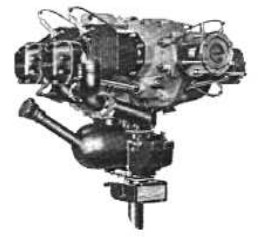
"Flecha"
-The Flecha was an engine equivalent to the Continental C-90, and was intended for the Aisa I-11B plane, and that finally had no problems with the use of the American engine. In the pictures of this engine we see the cylindrical-looking oil radiator at the rear-right part of the engine.
-The factory designation of the Flecha was F-1 and the official designation 4 (2L) 00-90.
-Note: the production figures given refer to those issued in August 1956. As already said in "Elizalde", the construction of the Turbomeca Marboré II engines was carried out under license and with the designation of M-21. They also began to build the Artouste in two power versions, as well as the industrial Aries engines.
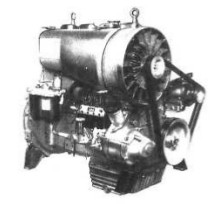
"Aries P-11"
-Being situated the official headquarters of ENMASA in Madrid, and the factory in Barcelona (like the Seat and ENASA), it was considered of Interest for Defense. But being anti-economic, ideas and projects were needed to make it profitable.

"Aries P-21"
-In 1959, the industrial engines appear. They were the P-11, P-21 giving 50 hp and the P-31, in petrol and diesel versions, air-cooled intended to be used for generators, compressors, vibratory rollers, harvesters, shovels. excavators, irrigation pumps, etc.
-Not being sufficient, an agreement is reached with Daimler Benz to manufacture the OM-636, O-319 and L-319 vans in Barcelona. The factory is expanded and the production of these vehicles reaches significant amounts.
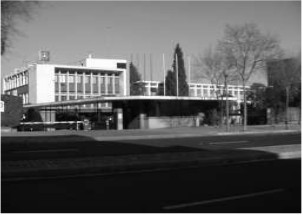
"Extended factory and star logo"
-But to finish this chapter, better return to the topic of aviation engines and its application in Spain.
-The Sirio S-VII gave 500 CV and had 7 radial cylinders. It was mounted on the first CASA Alcotán.
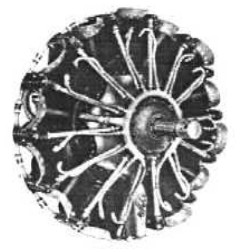
"Sirio"
-The 9-cylinder radial Beta giving 775 CV was built in Seville, and mounted on the Ha-100, E-1 and Ju-52.
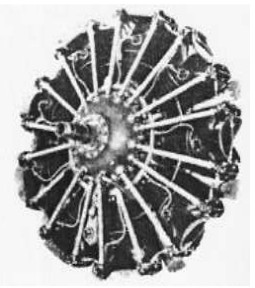
"Beta"
-We see the Beta installed on a Spanish Ju-52 with propellers manufactured by the national company of propellers ENHASA, the characteristic form of them, as a spoon near the root to facilitate cooling on land.
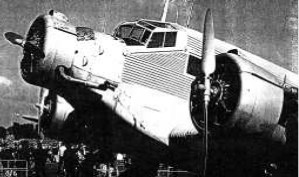
"Casa 352, Ju-52"
-The Flecha with 4 horizontally-opposed cylinders giving 90/95 CV was intended for the Aisa I-11B "Peque".
-The Tiger G-IVA engines with 4 inverted, in line, air-cooled cylinders gave 125 CV and went to CASA's Bücker Jungmeister. The Tiger G-IVB with 150 CV was installed on the Aisa I-115.
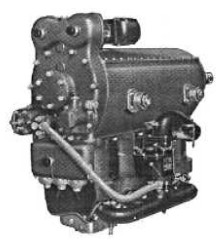
"Tigre"
-The 7-cylinder radial Alcion with 275 CV, filled the power class space left between the other models. It was the last indigenous design of Elizalde and went to the Casa Halcón.
-The Marboré II were mounted in pairs on the bow of the Saeta and Super Saeta.
-The production of Elizalde-ENMA fulfilled a period of difficult access to this material, from the civil war to the late 1950's.
Engines of ENMASA
Model: Alcion
Arquitecture: 7-cylinder Radial
Cooling:
Total Displacement:
Bore / Stroke:
Power: 275 CV
Weight:

"ENMASA Alción"
Model: Beta
Arquitecture: 9-cylinder Radial
Cooling:
Total Displacement:
Bore / Stroke:
Power: 775 CV
Weight:

"ENMASA Beta"
Model: Flecha
Arquitecture: 4-cylinder Horizontally opposed
Cooling:
Total Displacement:
Bore / Stroke:
Power: 90 CV
Weight:

"ENMASA Flecha"
Model: M-21 (Lic. Turbomeca Marboré)
Arquitecture: Turbojet
Compressor/s:
Combustion chambers:
Turbines:
Power / Thrust:
Weight:
Model: Sirio
Arquitecture: 7-cylinder Radial
Cooling:
Total Displacement:
Bore / Stroke:
Power: 500 CV
Weight:

"ENMASA Sirio"
Model: Tigre G5
Arquitecture: 4-cylinder In line inverted
Cooling:
Total Displacement:
Bore / Stroke:
Power:
Weight:
Model: Tigres G-IV A5 y A6
Arquitecture: 4-cylinder In line inverted
Cooling: Air
Total Displacement:
Bore / Stroke:
Power: 125 CV
Weight:

"ENMASA Tigre G-IVA-5"


